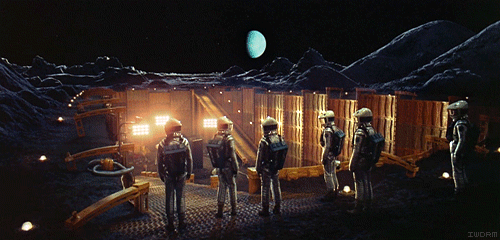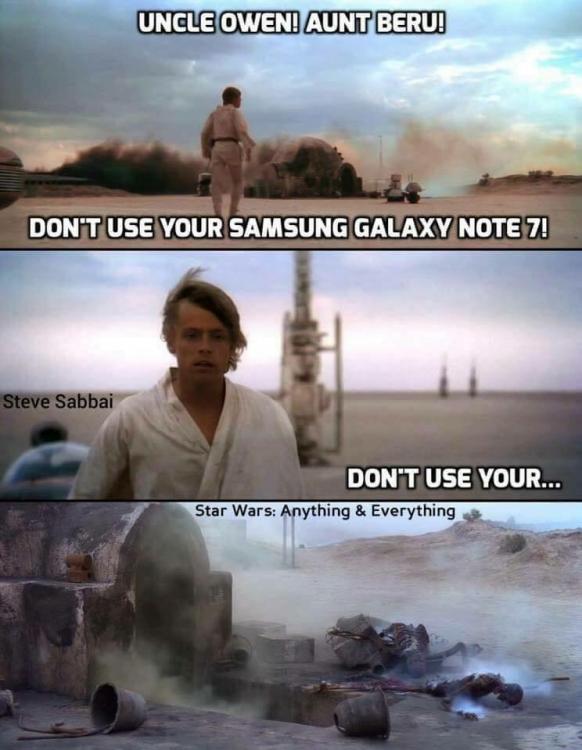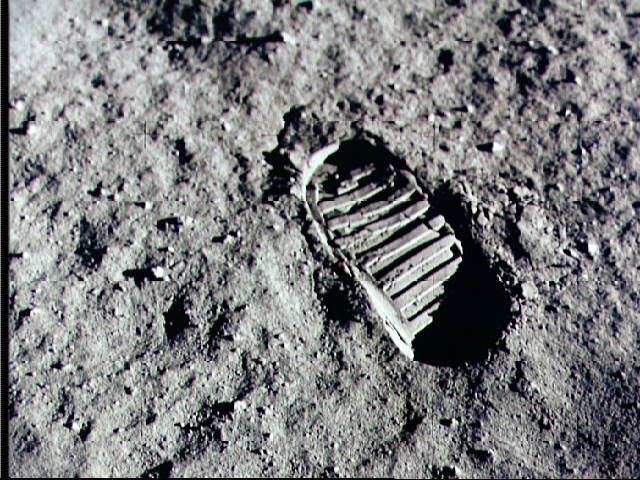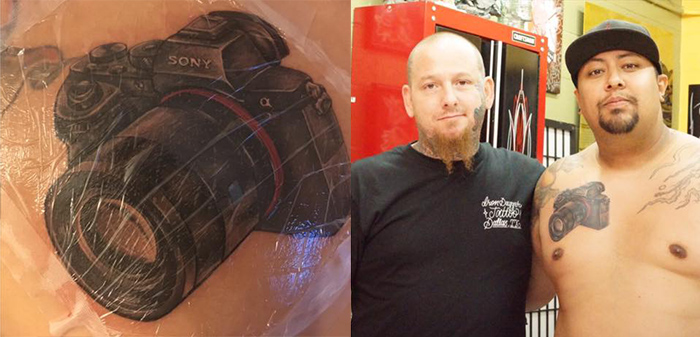-
Posts
632 -
Joined
-
Last visited
Content Type
Profiles
Forums
Articles
Everything posted by Hans Punk
-
Nope...the front retainer ring is just there to 'cap' the lens body and internal mechanism (and possibly to provide locking to the helicoid movement). Loosen the screws first, then see if that frees up the ring to be unscrewed a little...then try turning the focus (it may be a little stiff at first).
-
Quite normal...at least from my experience with DNA or any diopter for that matter. Oval bokeh stretch is often increased. It can be a good trade off when closing down on taking lens to retain sharpness on many scope lenses, since the apparent oval defocus is then reduced to a more 'regular' looking stretch ratio, akin to shooting with the taking lens with an open aperture when no diopter is used. Since most modern cameras perform very well at higher iso's...the effective loss of light by stopping down is far less of an issue. For example, Ive found f4 - f5.6 on Core DNA gives a comparable oval defocus stretch value to having the taking lens set at f2 - 2.8 when no diopter is up front. From most single-element diopters I've tried - I'd say f4 is as wide as you'd want to be to help avoid funky glows and highlight ghosting when used in front of most scope lenses....there is still plenty of defocus stretch, due to the diopter 'effect'. My advice to anyone using any of the vari-diopter solutions is to stop down 2-3 stops more than you would normally...so as to give the single-element optics a fighting chance at resolving sharpness, without ugly highlight edge artefacts...there will still be plenty of shallow depth of field for those who crave it.
-
Unfamiliar with that specific lens type, but is likely due to 2 causes: 1. Front ring is tightened into a 'locked' position by the screws being turned all the way in (some lenses have this as a feature to lock focus point when calibrated for projection use). 2. Internal helicoid grease has dried due to age, making the focus become very stiff - or not allowing any movement at all. This can be a very common with lenses of this age. Good news is you can check both things by loosening/unscrewing the front retainer ring. You want to loosen the outside screws on the front ring and see if that unlocks the focus. If not, completely remove that ring to allow access to the focus helicoid. That would be your point of entry to treat the dried grease problem.
-
That is a CP-16! Image from that would give any BM a run for it's money (kind of)
-
Very valid points...but I think the importance of meters with digital is sometimes overstated. Shooting drama is a different story, refinement and accuracy in lighting a crafted scene is where meters obviously still rule if you have the time to design and execute setups. I mainly do runs of commercial shoots (mostly green screen) where we do everything from monitor and scopes - no question. Often when a split Is taken to mix with precomp lineup or previs backgrounds. So 'twiddling the knobs in the tent' and checking by eye is often more efficient around a 100ft green stage. I don't care what a DP says with his meter or their eyeballs, if they don't fulfil technical requirements for me, I'll have a fat screen to show them why (happily not happened yet). There is not always the luxury to manually meter on some projects...and now that monitors are far more reliable and accurate they have become less prevalent in many cases when shooting digital. Not saying that is a good thing...it just appears to be a thing.
-
Mostly common to use a monitor with scopes when shooting digital (tends to be quicker). Pre-light and scouting are great use for meters...green screen is often better to use scopes to check colour Luminance and a green screen pan glass to visually check for dark spots and faint shadows. But you can still wave the light meter about when the BTS stills photographer is around (but make sure that you periodically stroke your chin and mutter to yourself after taking a reading).
-
HD25 MKII's are a good all rounder and you can sometimes find a good pair second hand. If you sit on them and break something - you can often find replacement parts (official or third party) that can prolong their life considerably. Not the highest regarded for dedicated recording by some, but very respectable for monitoring and have ability to easily swivel either ear away so you can pretend to be listening to someone, whilst actually listening to Barry White's greatest hits in the other ear.
-
Looks great to me...always worth colour correcting footage yourself to see what's what. 30 sec ballpark correction in Colorista from ProRes :
-
If you import a .dng sequence into ACR, you can use the chromatic aberration correction sliders to suppress and often eliminate CA from footage. Works great with .dng files from converted Magic lantern raw or MLV files...might also work with other footage that has been converted into a .dng image sequence (but I have never tried to see how effective or not that would be).
-
I suspect the look of film is too in-grained (weak pun intended) for everyone to agree on that, but its an interesting point. Emulating film is why Arri are still in business after over 100 years and why most modern cinema cameras are continually trying to emulate the characteristics of film negative derived from an optical process. Digital noise in many cameras is still judged by how 'grain-like' it appears. Post process of log and raw images are treated with tools that were built to mimic photochemical behaviour of stock emulsion/print process and chemical bath treatments...all focused on making digital images more relatable to work with and for audiences to accept the look of. It's proof that film is still regarded as the 'gold standard' for digital imagery to aspire too...sometimes including its grainy warts it seems. But modern cinema is already at a point where 360 degree shutter, rolling shutter, HFR have crept into modern filmmaking - things that could be regarded as completely non-filmic aesthetics by traditional standards...but the cinematic language has a history of changing...so yes - grain will most probably be eliminated from movies eventually and be considered an unwanted artefact of an 'antiquated' format. Its implementation as an easthetic choice for digital is sometimes subjective but the only bad online examples I've seen are from people who don't seem to understand the basics of colour correction and grading let alone the advantage that denoise and grain treatments can offer.
-
A good example of how grain can give a perceived impression of sharpness: https://vimeo.com/120035136
-
Adding a bit of grain can help dither digital highlights from having razor sharp edge contrast clipping as well as give an overall image the impression of added sharpness without making the edges buzz. When integrating CG elements into live action plates it is still one of the the go-to methods to help get the two to blend together better. An image with grain can still look very clean, as everything is uniformed with the global grain effect....which can be very different from digital 'noise' - which can sometimes only effect the shadows of an image, and is often not as monochromatic as film grain. Denoising an image - then adding grain back in can work great...again, this is often because often the non-uniform colour noise is removed/reduced, then a gentle wash of global monochromatic grain can really unify an image in it apparent sharpness and contrast. Film Convert grain is pretty good, but when I can I use real telecine scans from 35mm and overlay those at varying opacity. It is of course often down to personal taste and how effectively/subtlety it is used. I tend to regard image noise from digital as similar to the interference on a badly tuned old analogue TV...can sometimes be very a distracting buzz and detracts from the viewing experience. Grain is more like the pops and crackles you hear on vinyl...part of the experience and can actually add to the experience when used well - seems to add some impression of physicality (even if emulated digitally). Subtlety is key I think - does not have to be very obvious at all to improve an image (unless you are intentionally going for a grind-house look or trying to emulate old 16mm stock).
-
Not meaning to sound like a douche, but if I was in your situation the first purchase I would make would be comprehensive equipment insurance...then work out what you can afford to rebuild your stolen gear. Otherwise this may happen again, statistically more likely if you do assignments that involve travelling...and especially if you carry all of your camera gear in one bag.
-
The Canon may be less prone to exploding and killing you in a house fire though: http://www.theverge.com/2016/9/1/12759912/samsung-galaxy-note-7-recall
-
-
-

Is binge watching the new theatrical experience?
Hans Punk replied to HelsinkiZim's topic in Cameras
Since TV became popular in the 1950's, cinema has been playing catch up to lure back its audience...employing cinemascope, Todd AO and other large format experiences to give people sights and sounds that they simply could not get at home on their square black and white box. Now, an average home cinema setup can deliver image and sound fidelity that is light years ahead of any developments made in mass cinema presentation. A bluray is not a huge jump in quality from a theatrically mastered DCP, even 4K projection does not 'wow' the general audience enough to book a babysitter, drive 10 miles and spend a premium on ticket prices. 3D/4D/IMAX/HFR are all recent examples of cinemas trying to offer an experience that can not be mimicked at home...at least not as well. But we are in a time now where the quantity (or quality) of content for theatrical 'experiences' are not prevalent enough to warrant expensive overhauls in laser projection systems or a return to the days when a screening would physically be at a larger scale - before auditoriums got sliced up into multi screen multiplexes. This can be seen as a marker of when cinema started to be downscaled and be made to rival the revenue from competing home-based media (VHS/BETA etc). Hollywood (for the most part) are still milking the udders of the comic book movie cash cow. Often with clear intentions of shaping movies to appeal to the chinese market....the days of breakout summer blockbusters such as Die Hard, Jaws, E.T are over (at least for now)...we are currently at the mercy of money men making and marketing movies, the theatrical experience is never a priority, they are looking at cross platform revenue to a rigorously test audience approved demographic. They are selling Pepsi and Happy meals. The few stand out films of recent memory are from Nolan, Tarantino, Cuarón - where they used their weight to push for a more 'throwback' cinematic experience...big screens, large formats...for content they shot to purposely be shown in that way. We need more of this...with strong stories that really impact the viewer when viewed on a 60ft screen. Lots of talent can be seen on TV these days, often giving audiences an opportunity of immersion into characters and situations over a season or run of seasons. But this is what film used to be able to achieve in under 2 hours!....before those scripts got dropped in development, over simplistic fighting robot stories. The talent is there, it's just made a nest in TV land until general audiences get tired of the same old shit being spoon fed to them. There seems to be backlash already happening with DC films of late, but annoyingly these films can 'flop' yet still make a billion dollars. Unfortunatly 150 x 1 million dollar indie films are not as an appealing prospect for a big studio to greenlight, as their opening weekend gross of a flagship franchise is what the business has become. 150 x 1 million dollar films would be what you could commision from one blockbuster film's budget - imagine the breakout films that you would (by the law of averages) uncover...maybe the next spielberg and Kubrick. I totally understand why some Directors are migrating to TV, they are simply following the audience shift that would have once been able to see that directors interesting work on a silver screen, but is now seemingly harder to do so. Sometimes this can be liberating for director and story to have a longer run than the 3 act restrictions of the feature film construct. I am totally hopeful that cinema will get its audience back...and win one over the streaming generation (if there is even one). It's hard to tell when the wheel will turn, but I have hope. There is a great opportunity to be had by both co-existing, but at the moment TV is kicking the ass of most hollywood releases in terms of character development, story and original tone....often because it is not trying to appeal to the lowest common denominator, but rather capture an audience and keep it loyal - the values of what used to make mainstream cinema great. Modern TV offerings often have comparable production values (and often star power) as that of feature films, often with lower budgets, which seemingly also make for an under reliance on visual effects to support a story - this can often lead to tasteful implementation of effects and used sparingly to support an interesting story. This reminds me of the good old early 90's where CGI was really hard and expensive to produce, so often only used sparingly to great effect....Jurassic Park,T2,Abyss etc. On the flip side, I sometimes wish Nolan, Tarantino, Cameron etc will stop lording their aesthetics and presentation methods - and simply make more engaging films to the viewer. If Nolan wants to retain the glory days of large format film acquisition and presentation - great, just give me a story with characters I give a shit about first. 3D blue elves in the next 100 Avatar films I would be excited about seeing in 3D IMAX, if I thought it was not going to be like watching an animated pocahontas TV show that is tied to a theme park development. Tarantino has already said he will likely retire in the near future and turn to TV...that could be interesting, his short form episodic style obviously works well for the medium (and of course he's done TV before). So binge-watching may be the new experience for now, I just personally think that is because there has been such a drought from mainstream cinematic offerings, and maybe the audience are so thirsty for story and character...a sizable audience has simply migrated to TV, for how long we will have to wait and see I guess. -
A good method is to have both parties record themselves separately into their own audio recorder, then the interviewee emails their recording to you to mix with your recording (assuming we are talking about audio only?) The benefit of recording audio separately is that the quality is far superior and any audio dropout during the Skype call will be avoided. The actual Skype call between you both can be considered the 'talkback' channel to communicate, rather than the source to be recorded. If a video Skpe call, then the same method can be done with screen capture software, a dedicated video recorder such as ninja through HDMI...or at a push - filming off the screen. Audio is less forgiving over image quality, so the separate audio recording technique is probably the thing to prioritise IMHO.
-
Tito's calculator is a handy tool to work things out. http://www.tferradans.com/blog/?p=8615 Where there is less info on vignette with a 1.75x lens, treat it as 1.5x stretch, but allow a little wiggle room in the numbers (round up a little to be safe). I'm my experience, 1.75x lenses can often be regarded as a 1.5x stretch, as most medium/close focus distance scenarios (non infinity) will always yield less of the stretch ratio from the lens...as all Anamorphic stretch ratios are measured at the infinity point. Definitive answers on taking lens vignette or performance can depend on many things...often the way to find a good pairing is to test out for yourself. Also a taking lens' coverage may be slightly flexible if you are able to shoot 4:3 or 3:2 aspect in camera...or if you plan to shoot 16:9 aspect and post crop.
-
40mm should work on S35 with the1.75x inflight...50mm is an even safer bet. Helios 44 58mm works particularly well, especially the older 13 blade version, this helps keep the aperture as round as possible - meaning that when stopped down, the oval bokeh shape will be smoother (edges not cut into from the aperture blades). Many older 'preset' type lenses are good for anamorphic - as they often have lots of aperture blades, making for a nice round aperture when stopped down....this translates into smooth oval bokeh when using an anamorphic up front.
-
58mm on Full Frame 16x9 with some vignette, when sides of 16x9 de-squeeze is cropped to 2.39:1 vignette is often clear of active area.
-
Very easy to dismantle DNA...I modified mine myself. It is only the larger Inflight 1.75x that can be a bit of a pain to get it working with - other lenses (such as Kowa B&H/ 8Z etc) will work fine with the standard 75mm rear opening. Optically, the DNA is probably the best choice for now in my opinion - just don't expect precision engineering out of the box (it wobbles and makes a horrible noise when focusing) but that can be adjusted and the optic quality just about makes the price worth it IMHO. I tend to shoot with an old 100mm meyer optik f2.8 zebra - set no wider than f4 on full frame. Gives good all round performance and sharpness at that stop. All vari-diopters increases the apparent defocus bokeh, so f4 can be plenty shallow enough. DNA/Rectilux/FM module/ SLR Rangefinder are all single element design to their diopters, so fast open apertures are always going to show aberrations/glow/blur of some kind. Achromatic optics (if even they could be made at scale) would be horrendously expensive and noticeably heavy but would solve this issue. How close do you align the kowa rear element to the taking lens? I have my setup as rail mounted - so I either attach taking lens via an empty cpl ring (so taking lens can turn into camera mount whilst still attached to everything) or simply by pushing the kowa rear as close as possible to taking lens front, using a rubber collapsible sun hood as a donut. The optic rear of the Kowa is protected by collision by a uv filter and its diameter, relative to the taking lens front. It's a setup that I find can work very well. The other advantage of having the setup rail mounted, is that i can mount a VND to the rear of the kowa and in front of the taking lens...this works very well.
-
Depends on the production I've got a high torque stepper focus motor for my moco pan/tilt head - and I'm very cautious about setting the limit points on it, as it would be feasible that if left to overshoot - it would unscrew the DNA, or dislodge it's grip. This is something to get used to and take care with, not a huge deal. I've rigged the DNA with an empty 72mm uv filter clamped flush to the rear (fits snugly into that 75mm rear opening) - that then effectively gives you a solid 72mm rear thread for quickly screw mounting onto a quality front filter clamp, such as Redstan makes (works great on the smaller Kowa Bell & Howell this way). Soon I will be opening up the diameter with a lathe to allow a 77mm step ring to mount in the same way - giving me a few more millimeters to get the DNA rear closer to the Kowa Inflight front. At the moment I have a custom Rapido front clamp for the inflight that fixes to the front of the lens - after it's retainer ring has been removed (the knurled ring with white writing on) - this allows even closer mounting to the front. The plan is to open up the DNA rear just enough to screw directly onto that rapido clamp (77mm)...at the moment it has a 77-72 step down to join the two. As it is, it works well - but on full frame the edges suffer from mild blurring, due to the DNA not being close enough to the kowa front optic. This is why opening the rear diameter of the DNA is worth a try. On APSC and smaller, this problem will be less of an issue - but still present.
-
Teflon replacement collars for the guide screws is a good start. (Replacing the brass collars with Teflon ones will reduce friction noise when focusing) - I also reworked the internal focus mechanism to have a better strength and tolerance - that eliminated wobble. A bit too many other details and tweaks to list here without hijacking the thread topic.




_1.thumb.jpg.fdb5aab994467a27fe1f860f054f4843.jpg)

